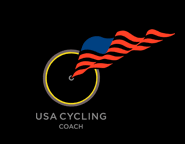CyberCycleCoach is based in sunny Southern California so rain is never a huge deterrent to riding our bikes as it is typically a pleasant 60+ degrees when the clouds are low. However some of our athletes live in less friendly climates where wet is also typically cold @ 42º. Here is a complete list of rain day ride rules that we recommend;
Dress appropriately: The goal is to keep the elements out and your body temperature stable – DO NOT OVERDRESS. Wear just enough to be slightly cold when you start pedaling. The first few minutes may be chilly, but your body produces a vast amount of heat so you will warm up quickly – layers;
- Base Layer: Next to your skin keeps you dry and stops you getting cold via ‘wicking’ Synthetic base layers don’t absorb water so they move moisture at a faster rate and (anti-‘fragrant’) Merino wool is better at providing insulation even when wet
- Mid Layer: Traps air between itself and your base layer to provide a cozy buffer against the outside temperature. Your jersey is typically synthetic but may contain small traces of natural fibers. It is designed to wick moisture away from your body, working as an extension of your base layer. Choose one or even two mid layers depending on the outside temperature.
- Outer Layer: These come in ‘windproof’ and ‘waterproof’ or both to keep large drops of water from penetrating to your inner layers. Check that the word ‘waterproof’ is in the description. We prefer Soft shell lightweight, breathable, windproof, waterproof jacket, with or without sleeves that allows wicking, with venting and/or removable sleeves to help maintain a comfortable body temperature during a ride but – must have a long tail.
Arm and leg warmers: Choose arm warmers that are not too heavily fleeced. If the temperature is over 60º you can avoid knee/leg warmers but for anything under 60º your joints will appreciate the added protection of lycra or even fleece-lined knee warmers – especially in the rain. Windproof tights (waterproof front and stretch material back sold in ski stores for downhill racing) on really wet and/or cold days are excellent especially if they have an elastic band that goes under your shoes.
Shoes and socks: Use neoprene booties high enough past your ankles and tuck them under windproof tights so that rain water running down your legs does not pour into your shoes. We have yet to find a good solution for wet socks and shoes. Neoprene booties, vinyl aero shoe covers, regular shoe covers, plastic bags and rubber bands all fail at some point. On the upside, just like a scuba suit, the water next to your skin gets trapped and warms up – so your shoes just feel ‘heavy’ so check under the shoe to ensure the vent is open to drain water.
Glasses: Wear clear or yellow lensed glasses treated with anti-fog such as Rain-X just before your ride
Keeping the rain out of your face: Simple – wear a cycling cap forward facing under your helmet to shield rain and road spray from hitting your glasses. Check that your helmet is on properly i.e. not sitting on the back of your head – protecting your forehead.
Gloves: ‘Cold Hands’ should be a primary concern on rainy days. Use ‘wind proof’ long fingered gloves e.g. Specialized’s BG Deflect Gloves, tucked under your rain jacket sleeves so that the cold rain water running down your arms is not sucked into the gloves. The deflective properties keep your wet hands warm. Like socks and shoes however you never seem to finish a rainy day ride with dry hands.
Fenders: Use them – Performance SKS X-Blade Fender and The SmartAss are not only for you but for the rider behind you – it is an unspoken rule that on rainy-day group rides you should never show up without fenders.
Chain Lube: On rainy days we suggest a heavier or rain specific chain lube/wax. Don’t expect it to last longer than about 2-3 hours before the squeaking starts.
Lights: The heavier the rain the less chance motorists have of seeing you. The brighter, the flashier, and the better chance you have of staying safe – especially if you are not riding close to the curb line.
Rain Bike: You can set up your fenders, lights and even spd pedals on a dedicated winter bike.
Tires: Reduce pressure in your tires for better grip – but only by 10psi as pinch flats caused by riding over puddles or a lot more bumps is typical on a rainy day.
Rainbow Patches and Puddles: Oil on the road will rise to the top of puddles, especially when it starts to rain, making the road surface a giant oil slick. Avoid rainbow-edged patches and also avoid the center of each car lane where cars leave the majority of their spilled oils. Metal (manhole covers etc.) are always slick as are all of the paint for traffic markings. You never know how deep a puddle is so try to avoid them.
Braking, turning, and accelerating: Use less of the front and more of the rear brake in wet conditions – but use them both. Do not ‘brake and turn’ and do not ‘turn and accelerate’ i.e. choose only one at a time – brake or turn or accelerate. It takes more than one full revolution of your wheel for the brake pads to scrape the water off the rim before the brakes are effective so plan ahead to brake early. When riding in a group the inside of a corner is the usually the safest place to be as crashes slide toward the outside. Overlapping wheels is the most common rain day crash so continuously and lightly test your brakes to gauge the required stopping distance, without actually braking and causing panic behind you, and as always be aware and plan your escape routes. Wet road grit will erode your rubber brake pads very quickly so check your brake pads after each wet ride.
Cornering: A training rain day is NEVER the best time to start learning how to corner properly so use every opportunity you have, whether it is on group or training rides or setting aside specific cornering training days – even solo rainy day recovery rides, to learn how to corner properly.
There are 5 basic cornering SKILLS that you need;
- Keep the frame stiff – downward pressure on outside pedal
- Lower your center of gravity i.e. hands in the drops is better than hands on the hoods is better than hands on the tops.
- Choose good lines: Turn wide, turn late and then hit and hold apex
- Go in under control (use both front and rear brakes)
- Come out fast
- Always look ‘though’ all corners
And there are 3 basic cornering TECHNIQUES you should be familiar with;
- Leaning (Lean your body into the corner at the same angle as the bike)
- Steering (Bike is more upright and your body is leaning into the corner)
- Counter-Steering (Lean the bike but keep the body more upright)
Use only #2 ‘Steering’ in the rain. Go into the corners slowly, let the bike flow through the corner by following the widest most gradual corner line for road/traffic conditions and accelerate slowly.
Do not stop – for long: You will be slightly wet, from perspiration, and it is cold outside and your body will cool down and start to chill if you stop for long so get going quickly to keep body temperature up.
You can improve your wet-weather skills by setting aside skill training days on a mountain bike off-road especially if it is on loose dirt trails. This will help you to feel the necessity of ‘weight shifting’ that roadies are simply not used to e.g. during climbs on wet and slick roads your rear wheel will slip under you and you need to shift your weight back slightly or at least stay seated to stabilize the bike. You can also practice braking hard to a skidding stop on the mountain or road bike on loose gravel or even in the wet to learn how to control a sliding bike in the rain.
Clean your bike and dry your shoes: You and your bike are both already wet and dirty so clean your bike as soon as you arrive back home/at your destination. This post-ride rinse is crucial regardless of how miserable you are feeling. It does not have to be a thorough washing. Rinse all the road gunk off the wheels, brakes, tubes, drivetrain, etc. and drain any collected water in your frame (bottom bracket) by standing the bike on end oil/grease moving parts
Pro-secret: Stuff your shoes (and even wrap your saddle and bars) with dry newspaper – they will all be bone dry in a few hours.
Nutrition and Hydration: You will lose just as much, if not more, moisture from your body in the rain than a normal ride so drink and eat plenty early. AVOID as much as possible swallowing road water spray kicked up into your face – it is nasty and can make you sick.
So now you know everything that I do about wet weather riding – I take great satisfaction in the middle of a ride when I realize that I am comfortable, safe, warm and riding my bike RAIN OR SHINE.
Thanks to Dan Netzer (who trains in the rain/cold/sleet and snow for half of the year) for edit and excellent additions to this article.


